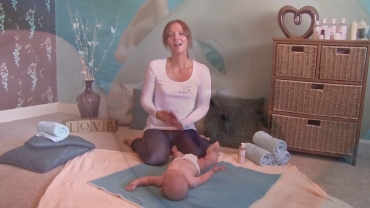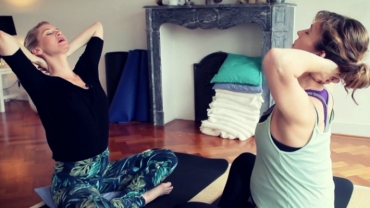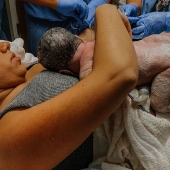After you have a baby rebuilding your core is a really important thing to to try to do. Sometimes people can do that really easily on their own after delivery. But more often than not, it's kind of a difficult concept.
The brain isn't always talking to the muscles the way it did prior to getting pregnant, and exercise definitely feels different. So, the first thing I try to do when patients come in is address their breathing pattern, because diaphragmatic function, or the way your diaphragm is functioning has a major impact on the way your abdominals are going to function.
The way your abdominals function have a major - has a major impact on how your pelvic floor is going to function. So, it's all connected, and the first place we will really want to start is their breathing pattern. Because if you think about what goes on in pregnancy, the uterus grows up into the abdomen; it presses on the diaphragm.
The ribs are stretched apart, and so that function can actually change, and sometimes it doesn't go right back to where it was prior to pregnancy, right after you have the baby. So, we really want to start with trying to get that breathing pattern back to a bit more normal pace, and also just motor control.
The pelvic floor is certainly affected during pregnancy, and it affects people differently, obviously. The pelvic floor has more pressure on it during pregnancy. And more importantly, we kind of talk about what happens to the pelvic floor with delivery, and that's a bit unpredictable.
But definitely during pregnancy, the brain is talking to the pelvic floor differently; it has a bit of, a different function since there's a lot more pressure down on the pelvic floor. So, that's a consideration for that postpartum time.
We want to make sure that we get the brain talking to the pelvic floor properly again, so that we can continue having the support that we need for the internal structures of the pelvis.
The pelvic floor certainly goes through a lot when a woman gives birth, particularly a vaginal birth. But, even with C-section, there's kind of prolonged pressure down on that pelvic floor, and so even with a C-section, I'll see patients in the clinic, postpartum, that are definitely having pelvic floor weakness in coordination.
So that it's something to consider with with both types of delivery. With a vaginal delivery there certainly can be there can be some stretching, there can be some tearing or laceration. And all of that happens, and it can be kind of a - just a normal process of delivery, and healing can be completely normal.
But women can still sometimes have some leftover weakness, difficulty connecting to the pelvic floor afterwards, and so that's what we want to address in physical therapy. Everything can be healed. Everything can be feeling really good in terms of you know the stitches and things like that.
The issue that people often have, postpartum then, is with urinary leakage, feeling like you have to go to the bathroom all the time, just weakness during exercise, a feeling of pressure in the pelvis, or even a feeling of falling out in the pelvic region. The concept of your pelvic floor returning to normal following pregnancy is definitely different for everyone.
I feel like it's a question I get in the clinic all the time. And it's definitely something we try to address, but I kind of just like to start with from square one, and talk to patients about - just be kind and patient with your body, because you're it's gone through a lot in the last year with almost a year of pregnancy, and then delivery.
- 1983 views













